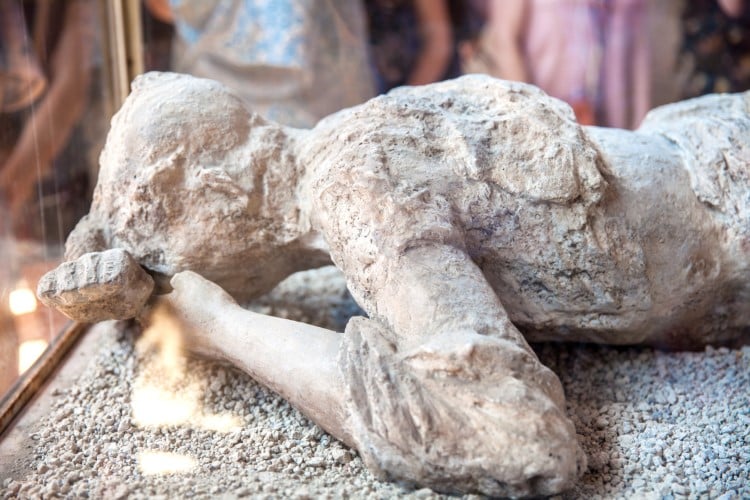
Photo: anamejia18/123RF
The volcanic eruption that hit Pompeii in 79 CE destroyed the bustling Roman city and covered it in ash. This ash ultimately preserved the city, which remained untouched until the 19th century, thus giving us the unique opportunity to see what an ancient Roman city looked like. But aside from preserving buildings, the ash also preserved the bodies of the 2,000 people living in Pompeii who were killed when Mount Vesuvius erupted.
The organic matter of these bodies had long since deteriorated by the time excavations began; however, in 1863, Italian archaeologist Giuseppe Fiorelli discovered human-shaped voids in the ash. The shape of the corpses was retained in the ash, and archeologists began making casts of the bodies. Today, many of these casts are displayed on site in Pompeii, giving the public a unique perspective on this catastrophic event.
Over 100 casts were made, showing the exact position of the bodies at the time of their deaths. Some were hugging, others were faced down with their hands covering their faces, and some appeared to have been sound asleep at the time that they met their fate. Of late, researchers have been using scans and DNA tests to try and discover more about the victims of Mount Vesuvius. The results have been interesting.

Photo: Giorgio Sommer via Wikimedia Commons (Public domain)
One of the most famous Pompeii casts was dubbed “The Two Maidens.” Locked in an embrace, the duo was romanticized for the fate they met. But in 2017, researchers in Pompeii announced that these “maidens” were actually men. They came to this conclusion based on a CAT scan and DNA testing. It’s believed that one man was around 18, while the other was at least 20. While their position—one man’s head resting on the other’s chest—suggests familiarity, researchers clarified that the two men were unrelated.
“When this discovery was made, that they were not two young girls, some scholars suggested there could have been an emotional connection between the pair,” shared Massimo Osanna, director-general of the Pompeii archaeological site at the time. “But we are talking about hypotheses that can never be verified.”
And these two figures aren’t the only ones that appear to have been misgendered. Another cast of a person labeled Victim Number 10, was long thought to be a girl. The body was discovered lying face down with their head resting on their right arm next to the body of a man who was lying on his back.
In his 1877 guide to the Pompeii casts, Fiorelli described the cast in the following manner. “Young woman [no.10], face down, with her head resting on her arm. She is denuded in part of her clothing, save for some traces on her shoulders, and her tresses are still visible, with hair knotted behind her head.”
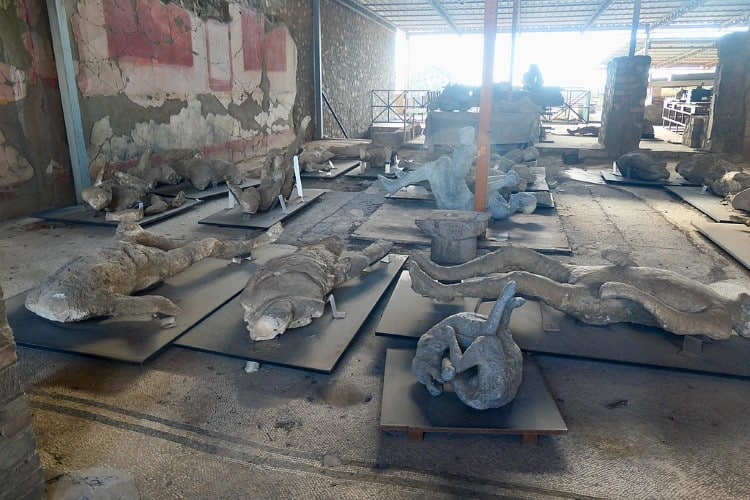
Photo: Bruno Rijsman via Wikimedia Commons (CC BY-SA 2.0)
However, in a 2015 project to analyze the casts came to the conclusion that Fiorelli’s description wasn’t entirely accurate. The Pompeii Cast Project, which was led by researchers from the University of Sydney, used x-rays and CAT scans as well as analysis of remains when possible. The team studied 26 casts, including Victim Number 10, and in a 2020 article, the team laid out the results of their investigation.
It turns out that Victim Number 10 isn’t necessarily female, as the “volume rendered image of the CT scanned cast does not display female features.” They also came to the conclusion that the victim was an adult based on an analysis of the bones in the victim’s forearm.
This work only serves to show us just how much is still unknown about Pompeii and how technology can help dispel some of the mysteries behind the people who met their fate that day. In fact, the successful sequencing of a Pompeii man and woman’s DNA in 2022 proves that researchers are just getting started when it comes to learning more about the catastrophic event and its victims.
When Pompeii was excavated in the 19th century, archeologists made over 100 plaster casts of the victims that had been engulfed in ash.
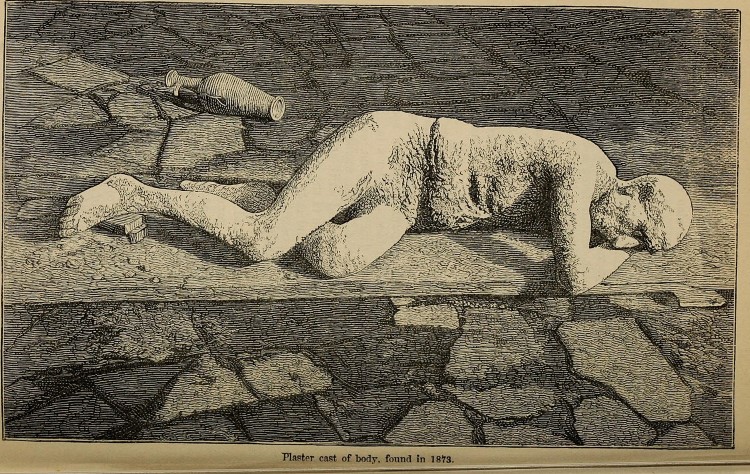
Photo: Thomas Henry Dyer via Wikimedia Commons (Public domain)
These casts are still on display today, and show the victims in the positions they held at the moment that Mount Vesuvius erupted.
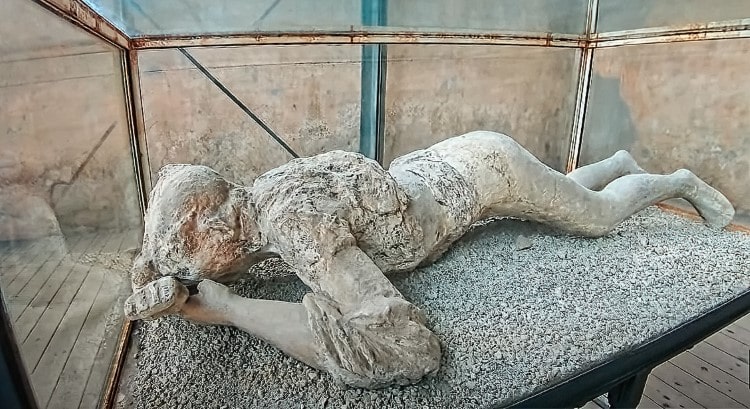
Photo: Mary Harrsch via Wikimedia Commons (CC BY-SA 4.0)
Researchers are now using DNA analysis and CAT scans to learn more about those who lost their lives in Pompeii.
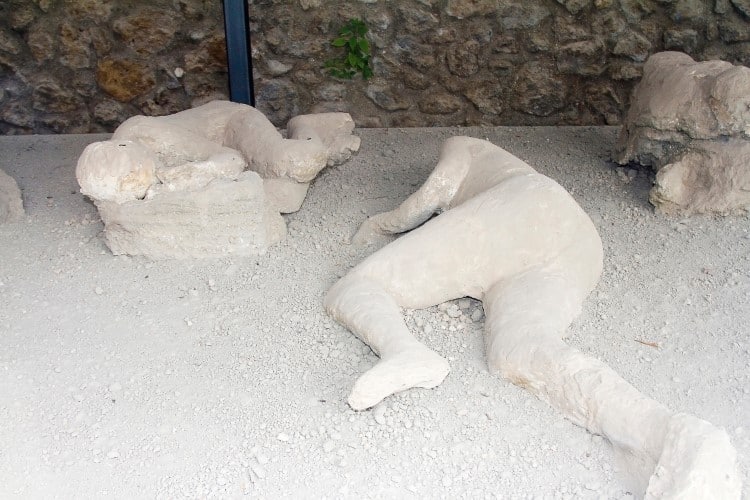
Photo: natursports/123RF
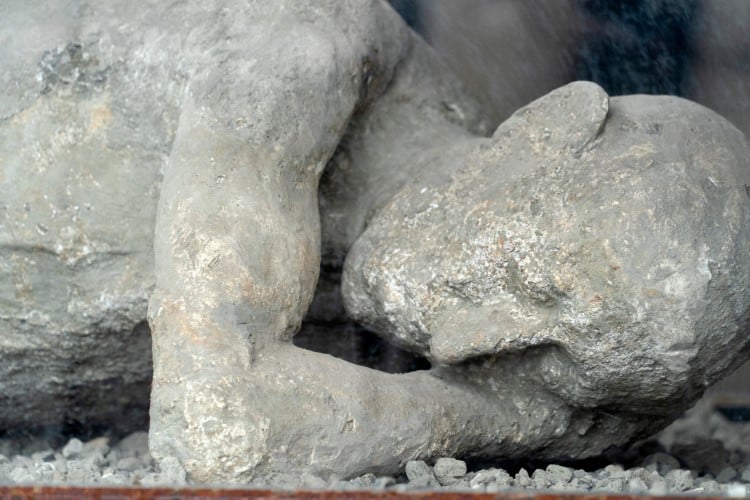
Photo: izanbar/123RF
Related Articles:
Pompeii’s Fully Preserved Ancient “Snack Bar” Opens to the Public
1,900-Year-Old Snacks Are Found in the Sewers Beneath the Colosseum
1,900-Year-Old Ceremonial Chariot Has Been Discovered Near Pompeii
Archaeologists Unearth an Incredibly Well-Preserved Ancient Food Stall in Pompeii
